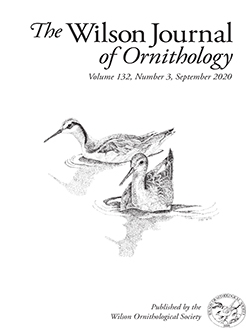Descriptions of individual breeding bird biologies provide important insights to our understanding of avian life history strategies. The present study focused on the reproductive biology and nesting ecology of the Olivaceous Flatbill (Rhynchocyclus olivaceus) in the Parque Zoobotânico (∼100 ha) of the Universidade Federal do Acre, Brazil, between April 2015 and March 2016. We found 91 nests, of which 14 were active and 77 were abandoned. Due to multiple nest failure incidents, we only monitored a single nest throughout the breeding period from nest construction to offspring fledging. This nest was built in 14 d, eggs were incubated for 26 d, and nestlings remained in the nest for additional 21 d. The nest was classified as closed, retort-shaped, and pensile. We deconstructed one nest that had a weight of 65 g composed of twigs (31.6% of the total weight), fibers (28.9%), leaves (14.5%), bark (9.2%), bamboo pieces (9.2%), and tendrils (6.6%). We found the nests at heights of 1–9 m above the ground, with a preference for a 2–4 m stratum, built atop 25 different plant species. The 4 species that were the most frequently used as nest substrate were Protium unifoliolatum (n = 16 nests), Casearia sp. (n = 11), Siparuna guianensis (n = 10), and Couepia sp. (n = 9). The Olivaceous Flatbill breeds throughout the year, in both rainy and dry seasons, and it seems to be highly sensitive to human disturbance during the breeding season. The reproductive parameters recorded in the present study were consistent with those reported for other species of this genus, although most of the findings are novel for the Olivaceous Flatbill and provide important insights into its reproductive biology in the Amazon region.
How to translate text using browser tools
28 April 2021
Breeding biology of the Olivaceous Flatbill (Rhynchocyclus olivaceus) in an Amazonian forest fragment of northwest Brazil
Drielle D. Floriano,
Jônatas Lima,
Edson Guilherme
ACCESS THE FULL ARTICLE
birds
Brazilian state of Acre
incubation
nest
nestlings
Rhynchocyclidae





